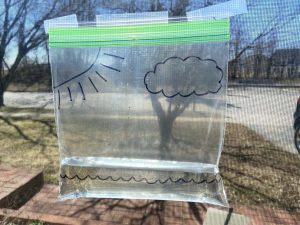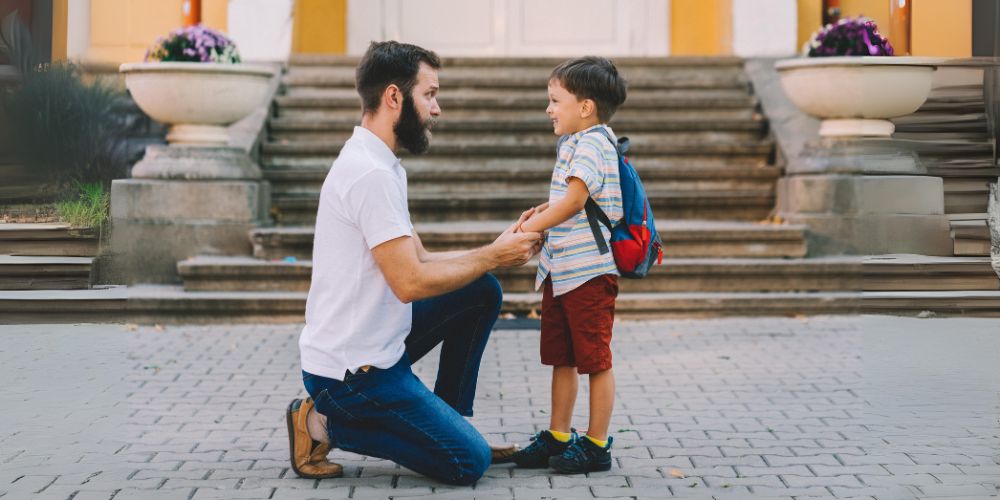STEM CHALLENGE – Water Cycle in a Bag
Let’s learn about the water cycle. You are going to be doing various experiments over the month of March that will teach you about the water cycle. This week we are going to make our own water cycle in a bag at home!
Materials
- Plastic zip lock-style bag
- Permanent marker(s)
- Water
- Blue food coloring
- Clear tape

What is the Water Cycle?
In simple terms, it is the process by which water moves around in our world. In particular, water moves around by evaporation, condensation, and precipitation. These are big words, so let’s go over what they mean:
- Evaporation is the process in which water becomes a gas.
- Condensation is the process in which a gas becomes a liquid.
- Precipitation occurs when water falls from the sky in the form of rain, sleet, snow, or hail.
Directions:
- Gather your materials!
- Decorate your bag. Use your permanent marker (washable markers will wash right off) to draw a sky in the upper half of your plastic bag. Include clouds and the sun, as they are important elements to the water cycle.
- Prepare your water. Next, fill a cup with regular tap water. Then add a couple of drops of blue food coloring to it to make it stand out (optional). Swirl the cup of water a few times to mix the coloring until it’s a nice, solid blue. Now, carefully pour the water into the plastic bag and zip it closed. You want to leave some space for air in the bag, but make sure it’s closed nice and tight at the top! You don’t want any water to be able to escape.
- Hang up your bag. Once your water has been added to the bag and it’s sealed up, it’s time to hang it up on a window! Pick a window that gets a lot of sunshine for best results. Cut two long pieces of tape and stick them to the corners of your bag. Then, press the tape tightly to the window – you don’t want your bag to fall down!
- Wait and Observe. Wait a couple of hours and check on your experiment. You should see a change in your bag between two hours and 1 day (depending on the amount of sun and the time of day you started). Eventually, you will begin to see droplets of water sticking to the side of the bag. Some of these will be up high (in the clouds) while other droplets will be on their way back down (like rain).
Why Does This Happen?
It’s because the water in the bag is being heated up against the sunny window. That water turns into a gas through evaporation. In nature, evaporated water vapor goes into the atmosphere, but in our bag, it has nowhere to go, so it ends up sticking to the sides of the bag, turning back into a liquid as condensation. That condensed water then slides back into the pool of water below as “rain” or precipitation.
Keep checking back on your experiment a few times a day, or anytime it’s sunny to see the water cycle progress!





